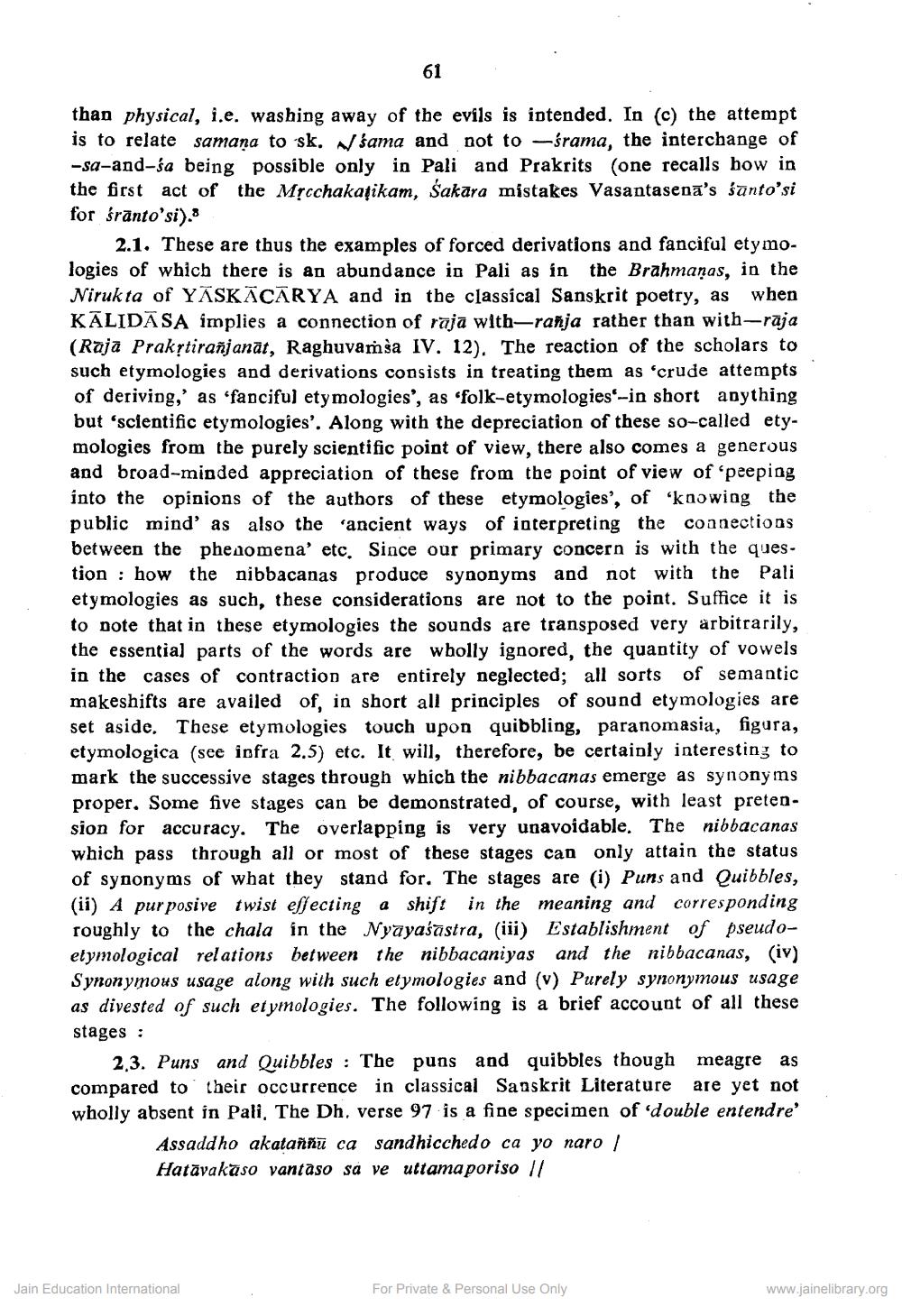________________
61
than physical, i.e. washing away of the evils is intended. In (c) the attempt is to relate samana to sk. sama and not to śrama, the interchange of -sa-and-sa being possible only in Pali and Prakrits (one recalls how in the first act of the Mṛcchakatikam, Śakāra mistakes Vasantasena's santo'si for śranto'si).8
2.1. These are thus the examples of forced derivations and fanciful etymologies of which there is an abundance in Pali as in the Brahmanas, in the Nirukta of YASKĀCĀRYA and in the classical Sanskrit poetry, as when KĀLIDĀSA implies a connection of raja with-ranja rather than with-raja (Raja Prakṛtiranjanāt, Raghuvamsa IV. 12). The reaction of the scholars to such etymologies and derivations consists in treating them as 'crude attempts of deriving,' as 'fanciful etymologies', as 'folk-etymologies'-in short anything but 'scientific etymologies'. Along with the depreciation of these so-called etymologies from the purely scientific point of view, there also comes a generous and broad-minded appreciation of these from the point of view of 'peeping into the opinions of the authors of these etymologies', of 'knowing the public mind' as also the ancient ways of interpreting the connections between the phenomena' etc. Since our primary concern is with the question how the nibbacanas produce synonyms and not with the Pali etymologies as such, these considerations are not to the point. Suffice it is to note that in these etymologies the sounds are transposed very arbitrarily, the essential parts of the words are wholly ignored, the quantity of vowels in the cases of contraction are entirely neglected; all sorts of semantic makeshifts are availed of, in short all principles of sound etymologies are set aside. These etymologies touch upon quibbling, paranomasia, figura, etymologica (see infra 2.5) etc. It will, therefore, be certainly interesting to mark the successive stages through which the nibbacanas emerge as synonyms proper. Some five stages can be demonstrated, of course, with least pretension for accuracy. The overlapping is very unavoidable. The nibbacanas which pass through all or most of these stages can only attain the status of synonyms of what they stand for. The stages are (i) Puns and Quibbles, (ii) A purposive twist effecting a shift in the meaning and corresponding roughly to the chala in the Nyayaśastra, (iii) Establishment of pseudoetymological relations between the nibbacaniyas and the nibbacanas, (iv) Synonymous usage along with such etymologies and (v) Purely synonymous usage as divested of such etymologies. The following is a brief account of all these stages:
2.3. Puns and Quibbles: The puns and quibbles though meagre as compared to their occurrence in classical Sanskrit Literature are yet not wholly absent in Pali, The Dh. verse 97 is a fine specimen of 'double entendre'
Assaddho akataññu ca sandhicchedo ca yo naro Hatavakāso vantaso sa ve uttamaporiso ||
Jain Education International
For Private & Personal Use Only
www.jainelibrary.org




